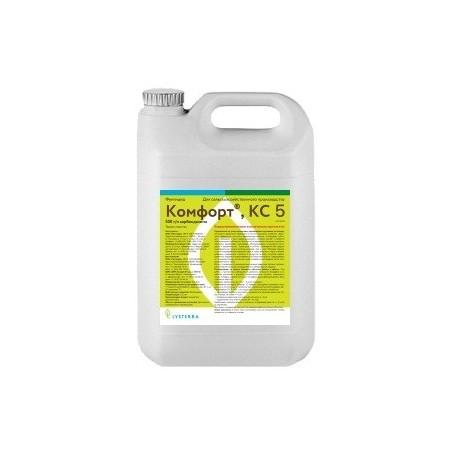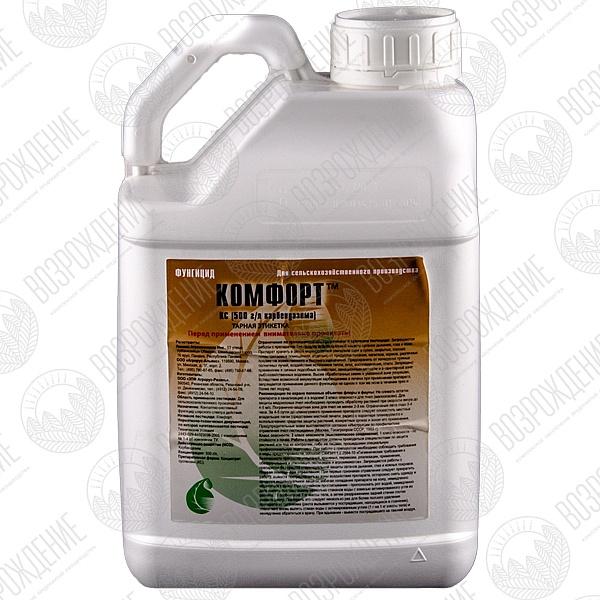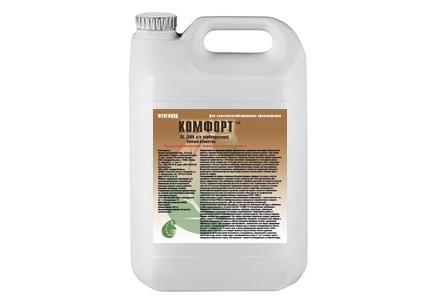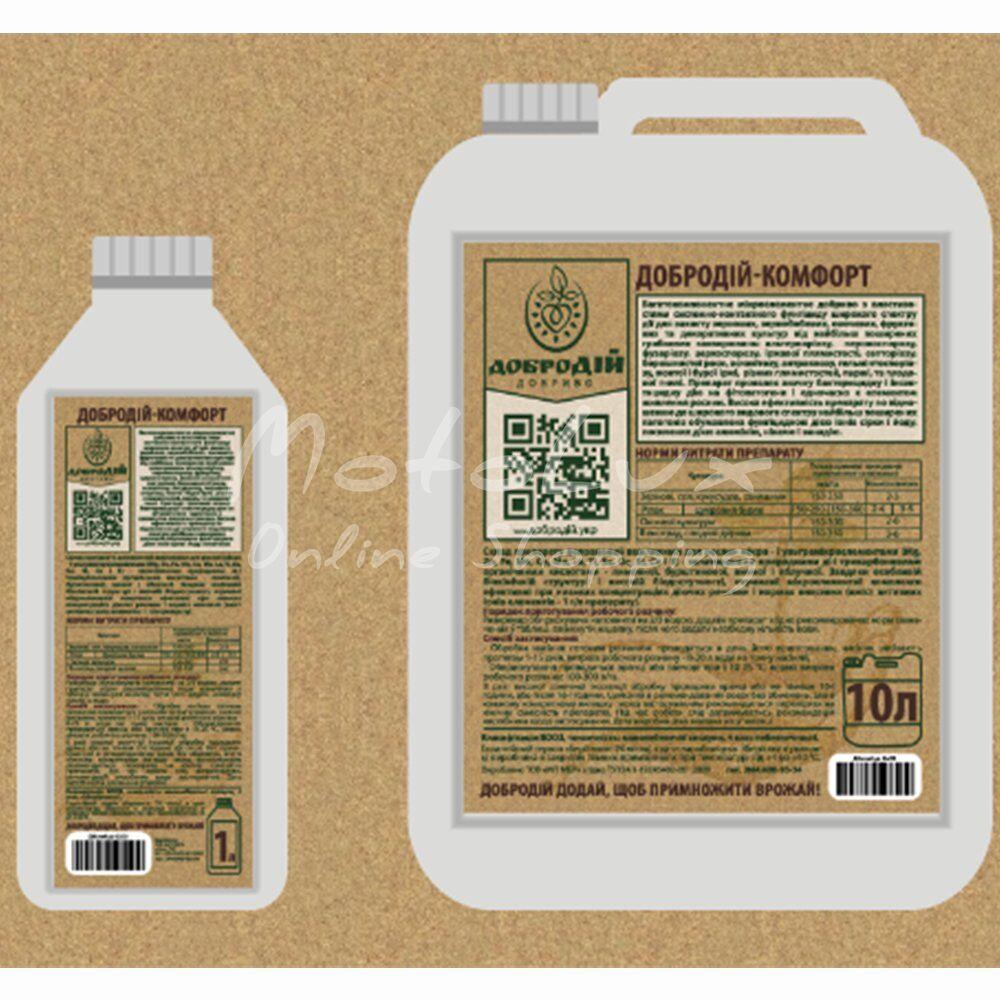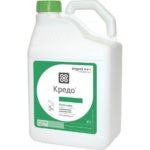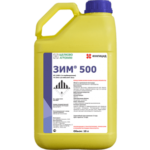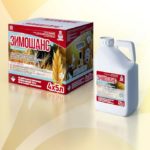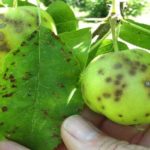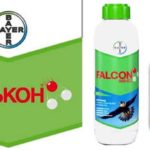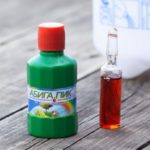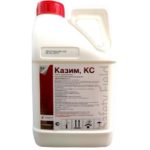For several millennia, humanity cannot imagine a single day of life without products made from grain crops and sugar beets. But environmental changes, to which microorganisms adapt tens of times faster than plants, especially cultivated ones, make farming increasingly risky. Fungicides and bacterial plant protection products, such as the drug “Comfort,” come to the rescue.
- Composition and release form of the systemic fungicide "Comfort"
- Mechanism of action and period of protective action
- Scope of application
- Consumption rate
- How to use this drug correctly
- Safety precautions for use
- Resistance
- Compatibility of fungicide "Comfort"
- Terms and conditions of storage
- Analogues of the drug
Composition and release form of the systemic fungicide "Comfort"
The drug is offered to the consumer in the form of a concentrated suspension. Active ingredient: carbendazim vxadded to its composition in a volume of 500 g/l. The liquid is packaged in 5-liter cans.
Mechanism of action and period of protective action
The systemic fungicide “Comfort” is introduced into the tissue of the crop it controls within 24 hours, without causing harm to it. There it spreads throughout the entire plant, having a detrimental effect on microorganisms that have already taken root or are just trying to initiate harmful activities.
This quickly leads to the death or degeneration of pathogenic organisms. After a single treatment of crops, the protective effect of the “Comfort” fungicide lasts for a month.
Scope of application
The active substance carbendazim is used for the prevention and treatment of diseases of grain and industrial crops. Fungicide "Comfort" shows excellent results when treating seeds and when treating above-ground parts of plants.
Consumption rate
The volume of working fluid depends on the growth phase of a particular crop and the mass of its vegetative organs.
| Culture | Diseases | Symptoms | Processing method and time | Doses of the drug (l/ha); working solution (l/ha, l/t) |
| Wheat, barley, oats | Fusarium head blight | Pink-orange coating on the ear scales. The grains are wrinkled, mummified, with sharp edges. The embryo on the cut is dark. | Spray at the first sign of infection. | 0,5-0,6; 300 |
| Cereals | Root rot | 1.White stem, empty ear, rotten root. 2. All parts of the plant near the surface of the earth turn brown. Dying of stems, roots, empty ear, underdeveloped grain. 3.Black roots and sheaths of basal leaves. White stems. Empty ear. Plants easily pull out and die. 4. Light eyes with a dark border on visible parts of the crop. The stems break and die. The ear is empty. | Grain dressing. | 1-1,5; 10
1-1,5; 10 |
| Wheat, barley | Dusty smut | Instead of a spike, there are black, dusty fungal spores. | ||
| Winter rye, wheat, perennial grasses | Snow mold | A white or pink coating in the form of a cobweb on rotten leaves and the tillering node; rot destroys the overwintered parts of the plant. | ||
| Barley, wheat, oats | Fire smut | The fungus colonizes in the seedling phase of the crop and appears at the stage of milky ripeness. The ears are dark green, reduced in size. Then they acquire a straw color, but the scales of the ear are spread apart, completely filled with spores, from which a grayish liquid is squeezed out. | ||
| Cereals | Powdery mildew | Leaf reduction, bushiness reduction, heading slowdown. A white coating on all above-ground parts of the plant, which then turns brown. | Spraying at the first signs of disease. | 0,5-0,6; 300 |
| Sugar beet | Cercospora | The leaves have light brown spots with a red-brown border. The older leaves constantly dry out and the tops fall to the ground. Newly grown leaves look healthy. | Spraying during the growing season. | 0,6-0,8; 200-400 |
| Powdery mildew | Powdery coating on the lower and middle leaves on both sides. Then brown, blackening dots appear on the plaque. The leaves do not function for long, darken, and dry out. Evaporation from the surface of the leaves increases, which is why they quickly take on a sluggish appearance every morning. | Spray at the first sign of infection. |
How to use this drug correctly
Spraying with fungicide “Comfort”, KS is not difficult. Its spraying is also permitted by aviation.The peculiarity is the preparation of the working fluid from a substance that is virtually insoluble in water. This is done this way:
- Half the amount of water is poured into the tank.
- The dose of the “Comfort” fungicide is measured and, with the mixer turned on, introduced into the first container.
- Everything is kneaded for 7-10 minutes.
- Water is added to the final volume of the working solution.
- Stirring lasts 5 minutes.
- Immediately begin spraying, without stopping stirring the contents of the tank.
Treating seeds with “Comfort” is a more complex process. The best option is treatment with moisture. Instructions for using the “Comfort” fungicide for dressing:
- The grain must be cleaned, calibrated, and tested for germination energy.
- The barley's awns are removed.
- Grains with a moisture content above 15% are treated 2-3 days before sowing. They especially need fungicide treatment, since an increase in the temperature of the seed with high humidity creates an environment conducive to the activation of fungi.
- Dry grain can be pickled 3-6 months before use.
- Working fluid with “Comfort” is used to moisten the surface of the prepared grain.
Safety precautions for use
It is preferable to spray the “Comfort” fungicide in calm weather or to enter (drive in) from the leeward side. Personal protective equipment should consist of:
- workwear and footwear;
- gloves resistant to chemicals;
- safety glasses;
- respirator
The duration of continuous work with the “Comfort” fungicide should not exceed 4 hours. At the first signs of deterioration in health, you must remove yourself from the area of effect of the drug. If the condition does not improve, consult a doctor.
If Comfort gets on the mucous membranes, wash the skin with soap and water.
After spraying the crops or processing the grain, the dishes and area where the solution was prepared are treated with water and soda ash. Overalls are kept in a designated place.
Resistance
Pathogenic microorganisms develop immunity against the action of carbendazole. In order to prevent mutation of the opportunistic functions of the fungus in the treated area in favor of its survival under the conditions of use of the drug, it is necessary to use this active substance no more than 2 times in a row.
Compatibility of fungicide "Comfort"
The drug should not be mixed with alkalis, as it reacts with them. It is possible to combine it in working solutions with many liquid fertilizers, growth activators, and other stimulating agents.
Terms and conditions of storage
The fungicide is valid for three years from the date of release. It is stored in a specialized room under lock and key at temperatures from -4 °C to +2 5 °C. A ventilation system must be installed and fire safety of the facility must be ensured.
Analogues of the drug
The functions of the fungicide “Comfort” can be performed almost completely or in certain areas by other agricultural protection products.
| Medicine | Disease | Mode of application |
| "Maxim 025" | Snow mold, root rot, bunt, mold on seeds. | Pre-sowing treatment of grains. |
| «Dividend Supreme» | Root rot. | Grain dressing. |
| "Zim 500" | Cercospora and powdery mildew of beets, root rots, dusty and hard smut, powdery mildew of grains. | Spraying of vegetative organs. |
| "Credo" | Snow mold, root rot of cereals, cercospora blight, powdery mildew of sugar beet. | Etching, spraying. |

